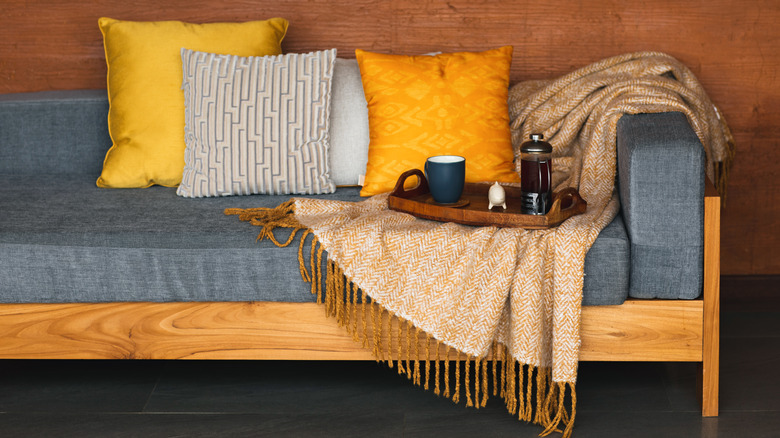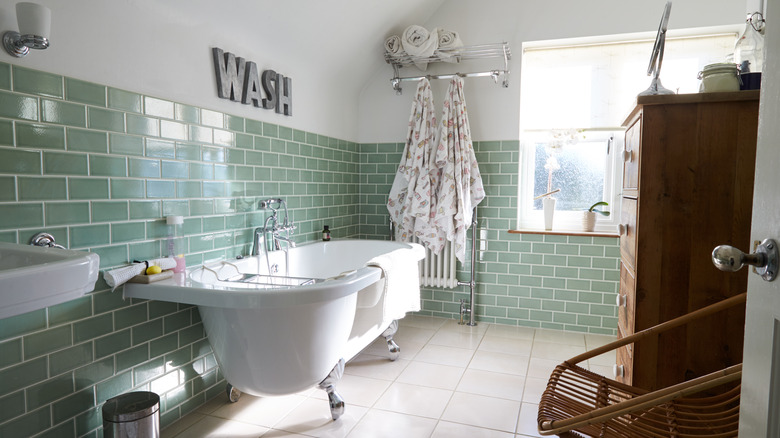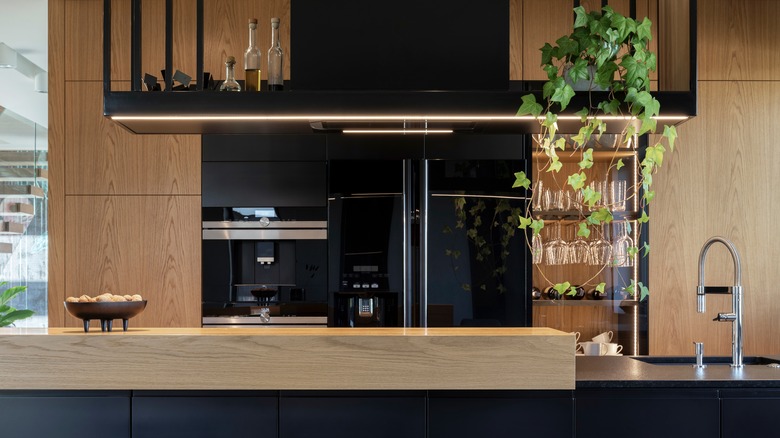Tips To Combine Warm Furniture With Cool-Toned Walls (And Vice Versa)
If you've ever had problems choosing between warm and cool color palettes, you'll be glad to know that you can merge both in a way that brings out the best in them. Combining warm and cool is a great way to add depth and interest to your decor. When done well, you can create a cohesive and harmonious look in your home. One way to do this is by contrasting your furniture with the color of your walls.
To combine warm furniture and cool-toned walls, or vice versa, start by identifying your main furniture pieces as they will set the tone for the rest of the room. Your large furniture items, such as the sofa, take up a significant amount of space and will be noticed more than the walls, therefore using them to create a specific palette gives you a guide moving forward. In addition, aim to create a pleasant contrast between your furniture, the walls, and other elements in the room, which can be accented with smaller decorative pieces, lighting, and textures to strike a harmonious balance and tie the space together.
Balancing colors
When mixing warm and cool color tones, a palette of neutrals can serve as a good backdrop for other parts of the room. You can achieve a balanced contrast by choosing your big pieces of furniture in warm colors like beige and brown and building on them with accents like rugs, throw pillows, and cushions in stronger colors. If the walls are cool shades like gray or blue, then perhaps add some art that's dominated by warm colors. Conversely, if your furniture items give off a cool feel, then you can warm up the room by choosing wall paint and accents that bring a warmer vibe, like yellow, orange, burgundy, and red.
Lighting is also crucial in balancing colors and nailing the cohesive look you're going for by mixing tones. Here, however, it's important to make sure the light tones you choose remain in line with the purpose of the room. Warm whites create a cozy atmosphere and might be a better option for bedrooms and living rooms, while cool hues are great for task lighting in home offices, kitchens, and bathrooms.
Balancing textures
As you think of your colors and shades, the textures in a room can also add to the warm or cool feeling. We experience textures not just by our sense of touch but also by sight, which is why they are largely used to create visual interest in a room. Regardless of their color, things like a concrete wall or a metal fixture usually communicate coolness just like woven fabrics and wooden furniture communicate warmth. Mixing these different elements and finding ways to either amplify or downplay their textures can be a great way to combine the two tones in a room.
Warm textures can be in the form of rustic wood tables, knitted blankets, rattan baskets, and dried or live plants and flowers; cool textures can be stainless steel cutlery, silk materials, and brass light fixtures. When you correctly combine natural and modern elements and textures, they will complement the color palette, facilitating both feelings of coziness and calm.


